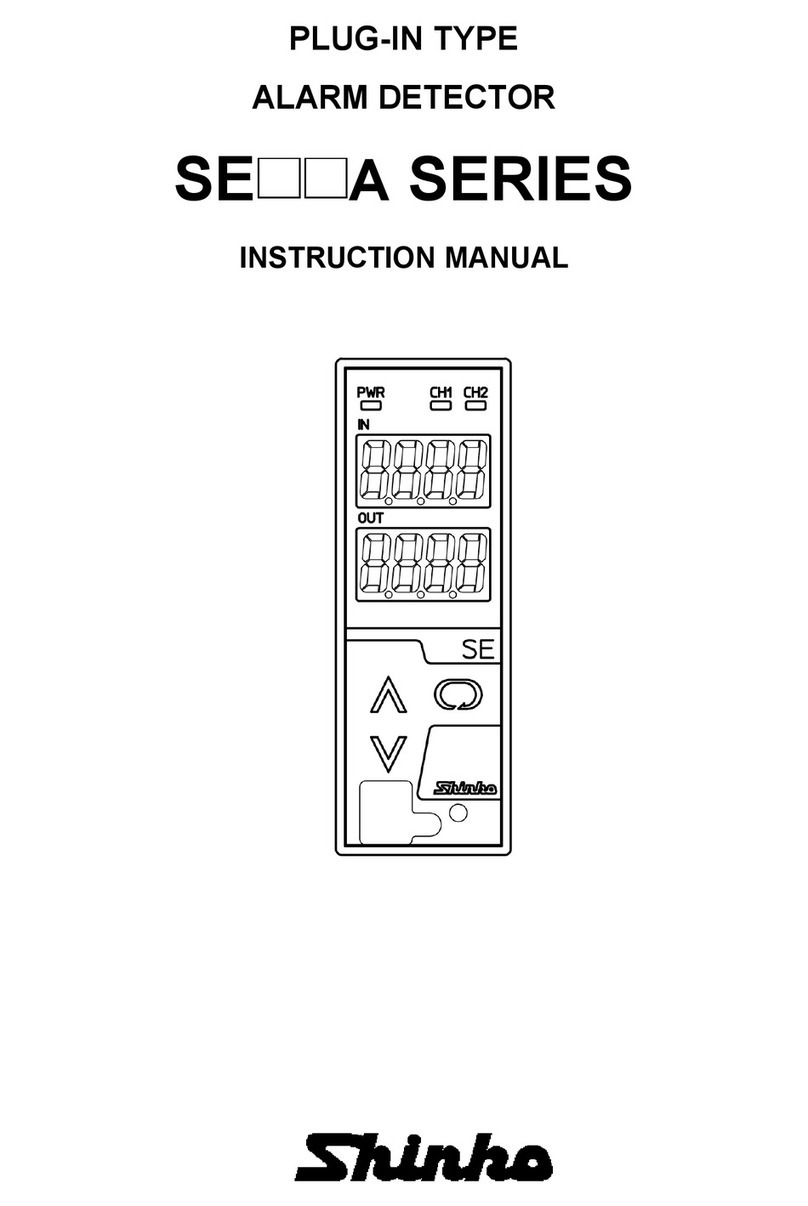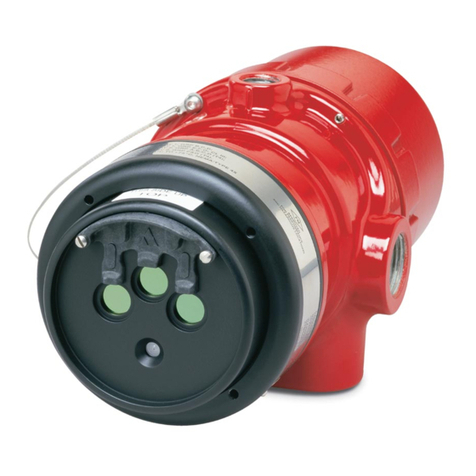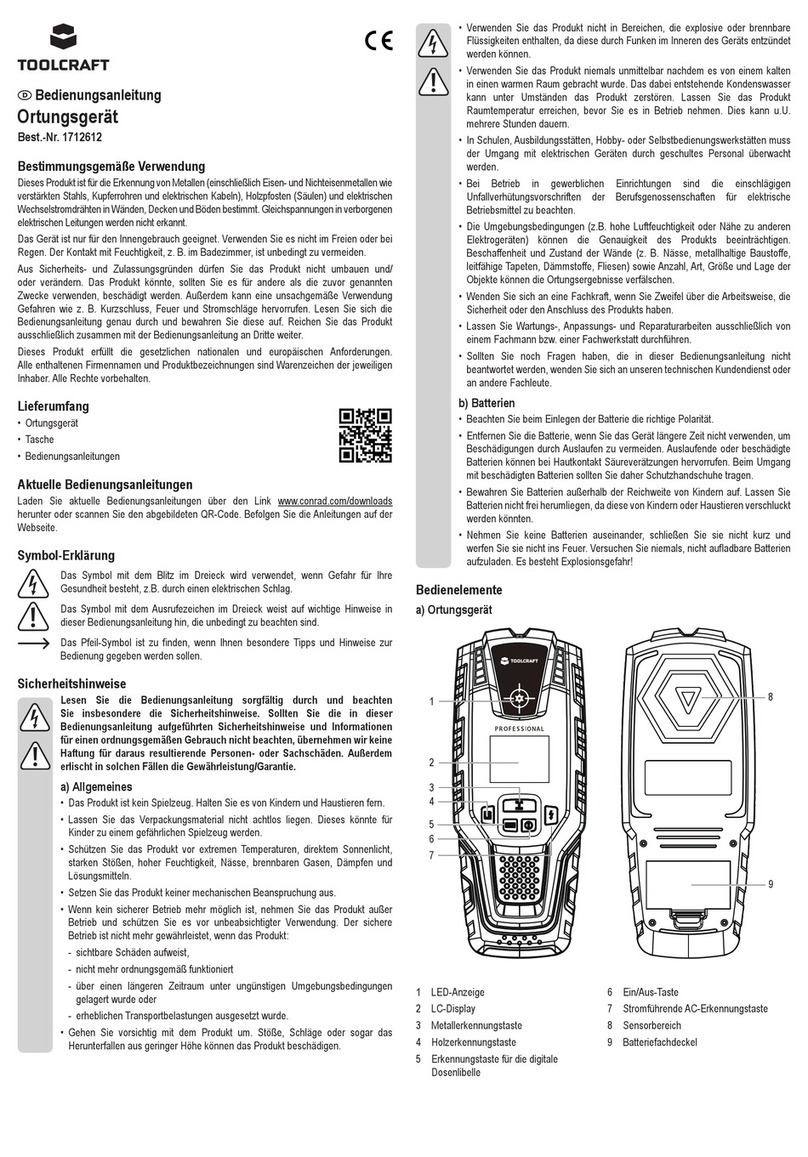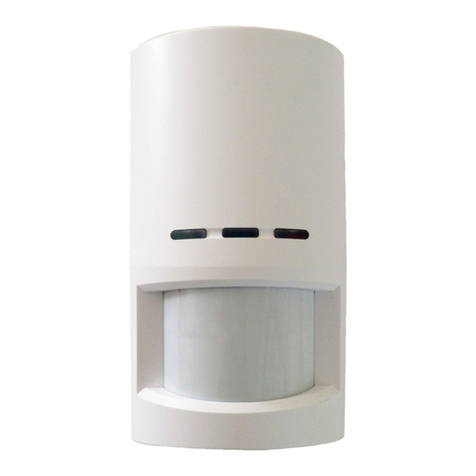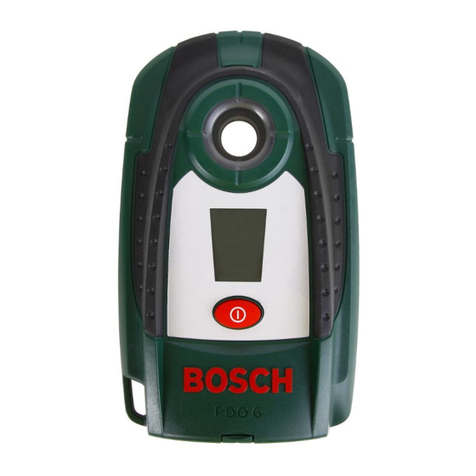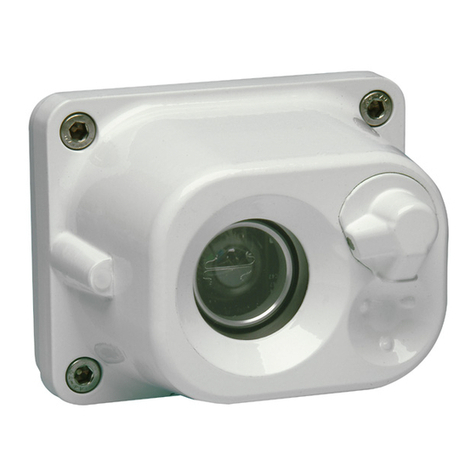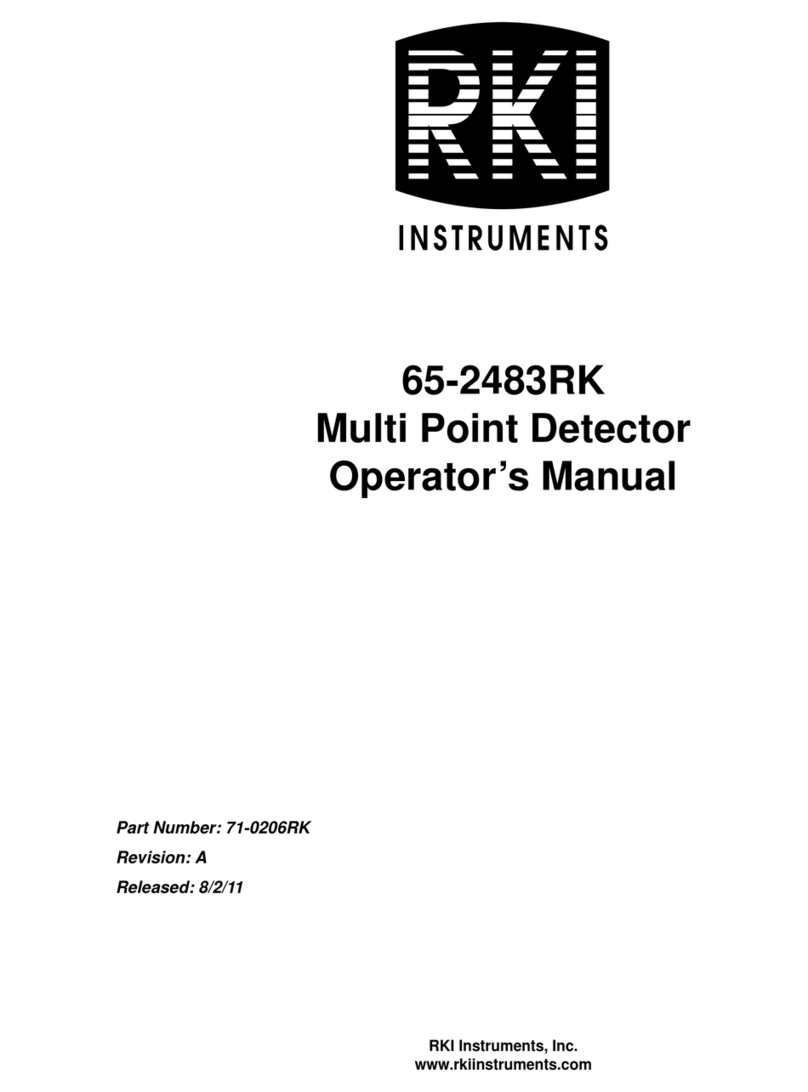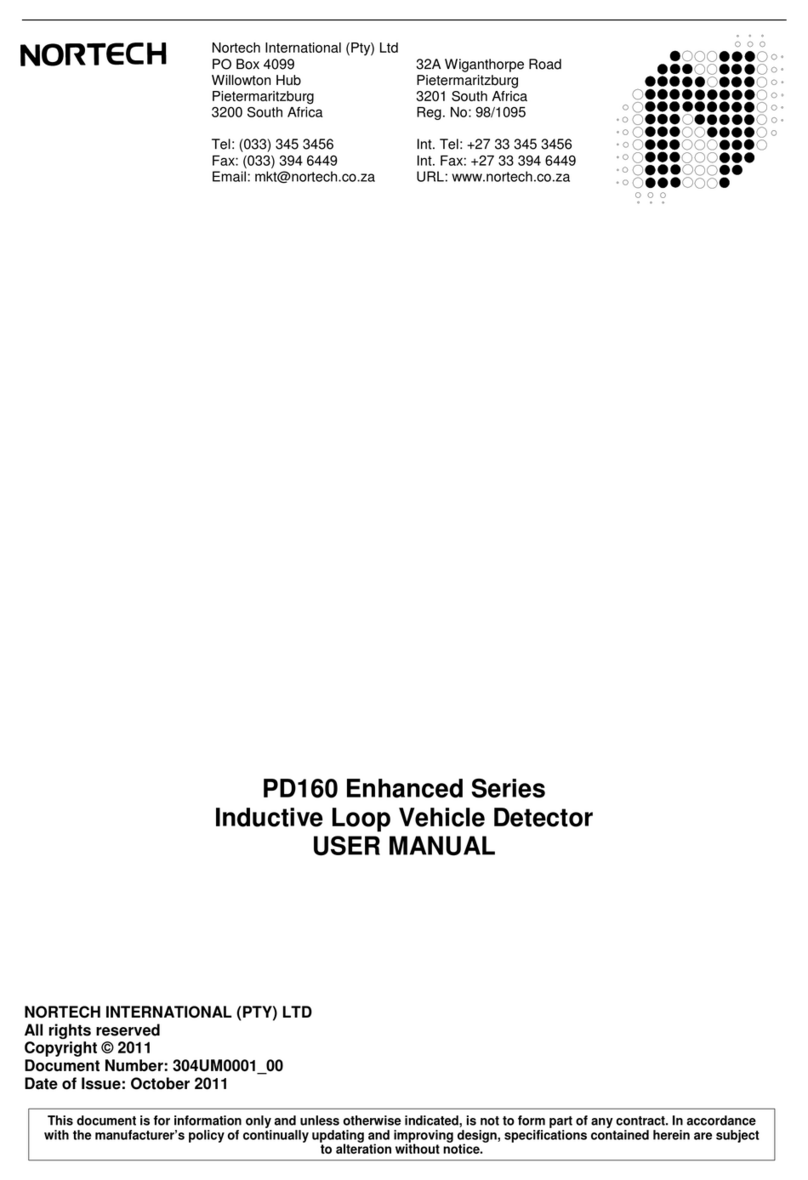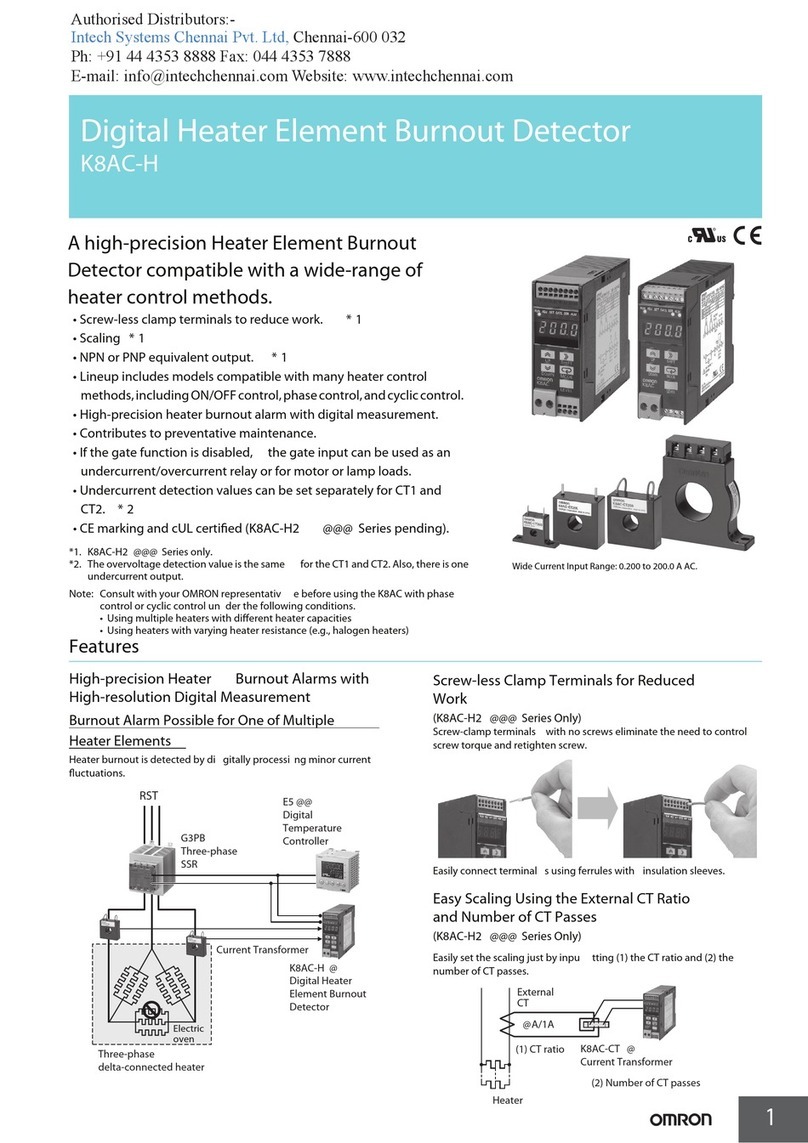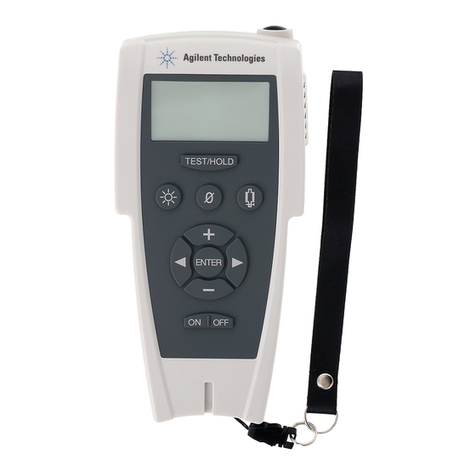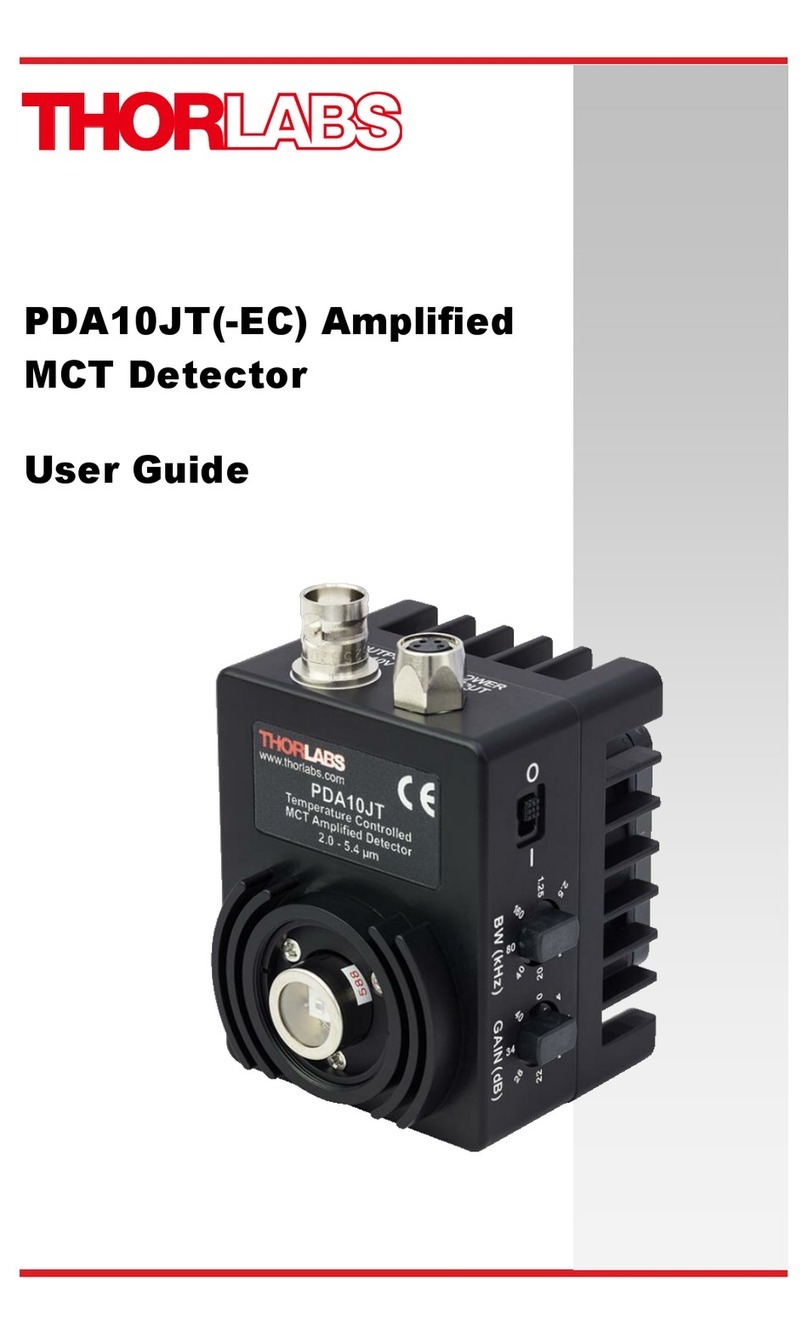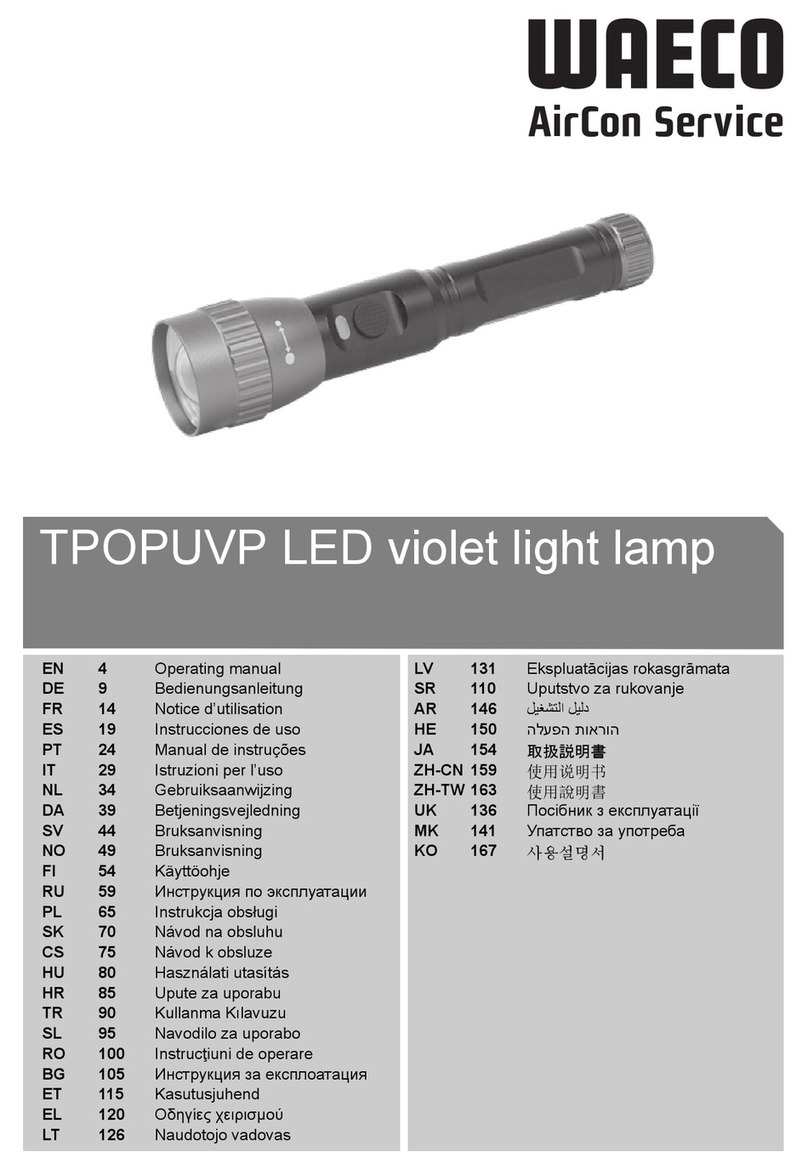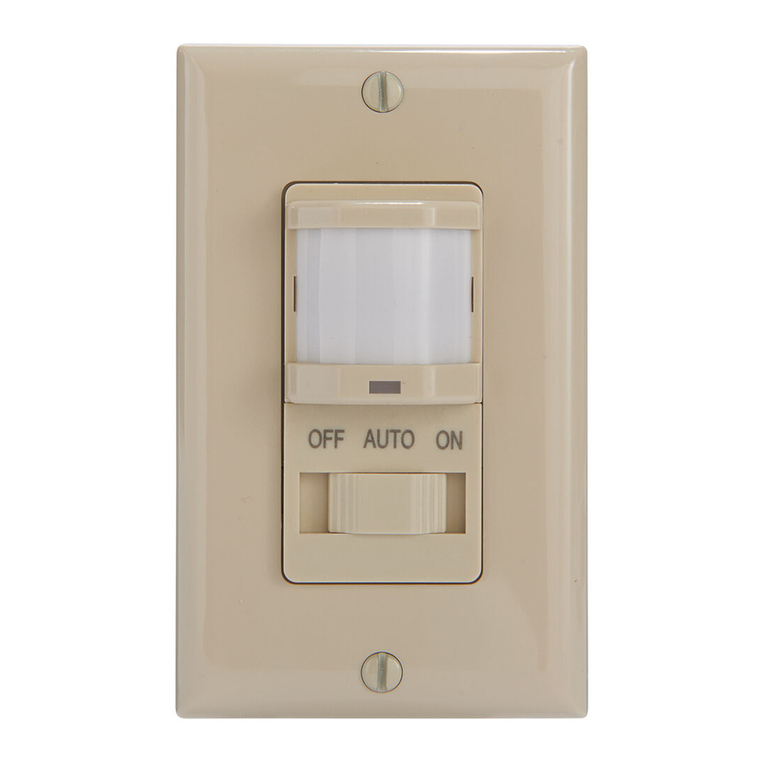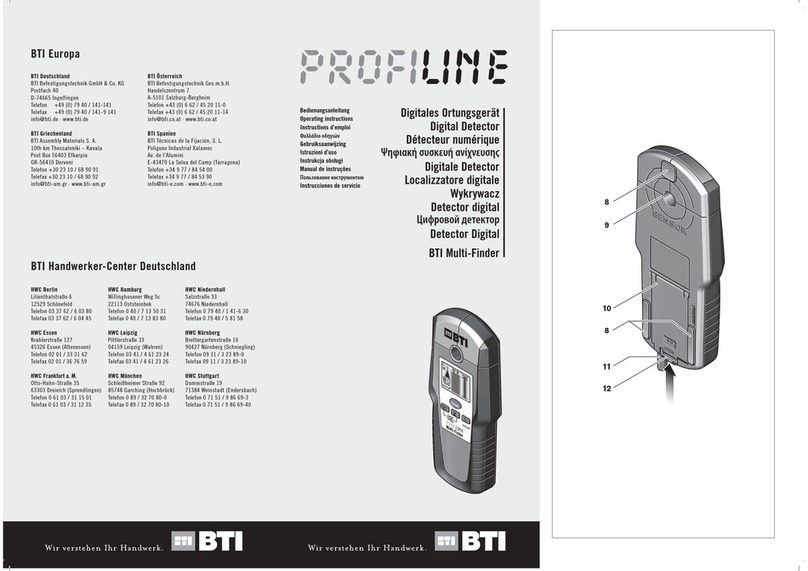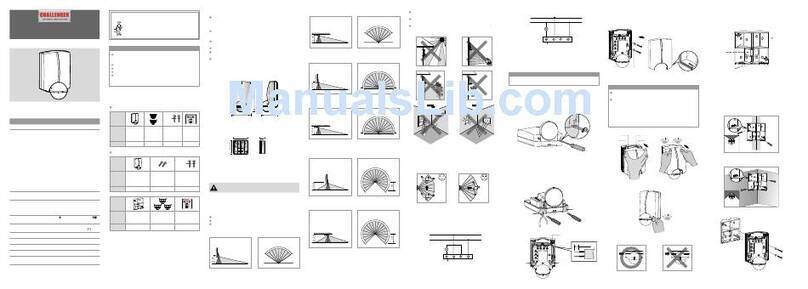
2©Firey AB (November 2015)
Description
The Omniguard model 540/545 test source is a self-contained,
portable, hand-held, explosion-proof device designed to stimulate
Omniguard ame detectors.
Model 540
The model 540 is designed for to test Omniguard UV/IR ame
detectors. The model 540 contains a rechargeable battery and
circuitry to power two light sources which emit a calibrated ratio of
ultraviolet (UV) and infrared (IR) energy simulating the spectral radiant
characteristics of a ame source.
The model 540 is not an absolute calibration source however, and
is only intended to generate sucient UV and IR radiation in a ratio
recognized by the ame detector as being representative of a ame
source, thereby initiating a re relay closure and subsequent alarm.
Proper calibration of Omniguard ame detectors can only be achieved
by the manufacturer using open ames and sophisticated test
equipment.
Model 545
The model 545 is designed for to test Omniguard UV/IR ame
detectors, Omniguard Multi-Spectrum IR ame detectors, Omniguard
UV ame detectors.
The model 545 contains a rechargeable battery and circuitry to power
two light sources which emit a calibrated ratio of ultraviolet (UV) and
infrared (IR) energy simulating the spectral radiant characteristics of
a ame source for a UV/IR ame detector. The light source for the IR
energy has been ltered to the correct spectral radiant characteristics
of a ame source for a Multi-Spectrum IR ame detector. The
light source for the UV energy has the correct spectral radiant
characteristics of a ame source for a UV ame detector.
The model 545 is not an absolute calibration source however, and
is only intended to generate sucient UV and IR radiation in a ratio
recognized by the UV/IR ame detector, IR radiation recognized by the
Multi-Spectrum IR ame detector or UV radiation recognized by the
UV ame detector as being representative of a ame source, thereby
initiating a re relay closure and subsequent alarm.
Proper calibration of Omniguard ame detectors can only be achieved
by the manufacturer using open ames and sophisticated test
equipment.
Application
Model 540
The model 540 test source is designed to test Omniguard Models 730,
750, 850, 860 UV/IR ame detectors.
Model 545
The model 545 test source is designed to test Omniguard Models 730,
750, 850, 860 UV/IR ame detectors, Omniguard Model 760 Multi-
Spectrum IR ame detector and Omniguard Models 651, 652, 653, 654,
655, 656, 657, 658, 660 UV ame detectors.
Specications
The model 540/545 test source is approved for use in Class I, Division 1,
Groups C and D areas. Third party testing has been performed by
Canadian Standards Association (CSA).
Performance
Model 540
Typically a fully charged model 540 test source will work eectively
at a range not to exceed 15 feet (4.6 meters) when aimed directly at
the face of a detector. The eective test distance to the ame detector
and number of tests achievable on a full charged battery will vary
depending on the Omniguard ame detector model and the user
selectable settings.
Model 545
Typically a fully charged model 545 test source will work eectively at
a range not to exceed 10 feet (3 meters) when aimed directly at the
face of a detector. The eective test distance to the ame detector
and number of tests achievable on a full charged battery will vary
depending on the Omniguard ame detector model and the user
selectable settings.
Operating instructions
Cautions: For safety reasons, the following operational cautions must
be understood and strictly adhered to while using the model 540/545
test source:
• Do not look at or aim the test source in the direction of another
person. When powered, the ultraviolet radiation generated by the
model 540/545 test source can permanently damage eyesight.
• Due to its size and weight (13 pounds (5.9 kilograms)), care should
be taken when climbing ladders etc.
• Charging the model 540/545 should only be performed in non-
hazardous environments with approved charging device. After
charging has been completed, replace and securely tighten the
charging plug access cap prior to entering a hazardous area.
• Never energize the model 540/545 while it is being charged
• Deactivate all automatic re suppression systems prior to testing
the ame detectors to avoid unwanted discharging of the
suppressant.
Operation
The model 540/545 test source is shipped with an uncharged battery
and will require full charging prior to use.
Remove the charging plug access cap located in front of the handle on
the top side of the test source. Do not remove the rear cover. First plug
the connector of the Omniguard charger (Firey part no. 22663) into
the test source socket, then plug the charger into the AC outlet. Allow
the test source to charge for a full 16 hours. Do not turn on the test
source while charging.
Remember to securely tighten the charging plug access cap after
charging is complete to maintain the explosion–proof integrity of
the test source. In a fully charged state, the test source will typically
provide 30 to 45-second tests.
To perform a simulated ame test, it is important to face the ame
detector as squarely as possible at a maximum distance of:
• Model 540 test source: 15 feet (4.6 meters), or in the case of the
Omniguard 753, 9 feet (2.74 meters).
• Model 545 test source: 10 feet (3 meters), or in the case of the
Omniguard 753, 9 feet (2.74 meters).
The extremely narrow beam width of the IR light source requires use
of the sighting tube for reliable operation. Proper aiming is achieved
when the following conditions are met.
• UV/IR ame detector: The smaller window (IR channel) should be
centered within the viewing angle provided by the sighting tube.
• Multi-Spectrum IR ame detector (model 545 only): The center
of the two windows should be within the viewing angle of the
sighting tube.
• UV ame detector (model 545 only): The large window should be
within the viewing angle of the sighting tube.
Note: O-axis aiming of the model 540/545 test source will result in a
reduction of sensitivity (test distance) and is not recommended.
To initiate a test, pull back on the slide trigger. Release the trigger only
after the ame detector has alarmed or sucient time has elapsed
in which the detector should have gone into an alarm state. Do not
maintain trigger engagement for periods longer than 10 seconds.
Omniguard ame detectors are typically set at the factory for a re
relay actuation time delay of three seconds. In order to perform a
simulated re test and activate the re relay it is necessary to maintain
aiming of the test source on the ame detector for the duration of the
